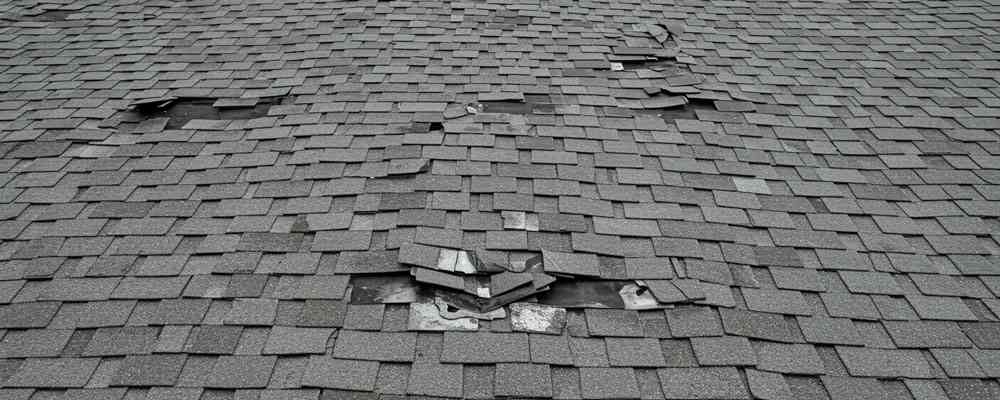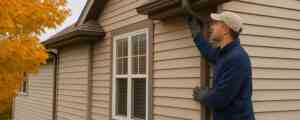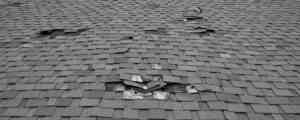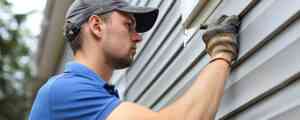Your Complete Guide to Protecting Your Home After Severe Weather
Northwest Indiana homeowners know the drill. When storm clouds gather over Lake Michigan, they can unleash everything from golf ball-sized hail to straight-line winds exceeding 70 mph. While your roof is built to handle Mother Nature’s fury, even the most robust roofing systems have their limits.
The key to avoiding thousands in unnecessary repairs? Knowing exactly what to look for—and acting fast when you spot trouble.
Safety First: When NOT to Inspect Your Roof
Before we dive into inspection tips, here’s what you need to know about safety:
- Never climb onto a wet or damaged roof
- Wait at least 24 hours after a storm before any inspection
- If you see obvious structural damage, stay clear and call professionals immediately
- Use binoculars or a camera with zoom for closer ground-level inspections
Ground-Level Red Flags: What You Can Spot From Your Driveway
Start your inspection with both feet firmly on the ground. These visual cues often tell the whole story:
Shingle Damage
- Missing shingles: Look for dark rectangular patches where shingles should be
- Granule loss: Check for bare spots that look lighter than surrounding areas
- Curling or buckling: Shingles that appear warped or lifted at the edges
- Cracked or split shingles: Often visible as dark lines across individual shingles
Structural Issues
- Sagging rooflines: Any dips or uneven areas along the roof’s edge
- Damaged gutters: Dents, pulling away from the house, or obvious debris buildup
- Compromised flashing: Look around chimneys, vents, and where the roof meets walls
Your Property’s Story: Reading the Clues in Your Yard
Storm damage leaves a trail. A walk around your property can reveal:
- Roofing materials on the ground: Shingles, metal pieces, or granules
- Siding or trim damage: Often indicates wind patterns that affected your roof
- Tree damage: Broken branches or debris that may have impacted your roof
- Clogged or overflowing gutters: A sign that your drainage system took a hit
Pro tip: Take photos of any debris before cleaning up—your insurance company will want documentation.
Inside Intelligence: When Your Home Speaks Up
Sometimes the most telling signs appear indoors:
Immediate Red Flags
- Active leaks: Water dripping or pooling anywhere inside
- New water stains: Brown or yellow discoloration on ceilings or walls
- Damp insulation: Check your attic within 48 hours of a storm
Subtle Warning Signs
- Musty odors: Often the first sign of moisture infiltration
- Peeling paint: Especially around windows or on upper-level walls
- Increased energy bills: Damaged roofing can affect your home’s efficiency
The Northwest Indiana Timeline: When Seasons Matter
Our region’s unique weather patterns create specific risks:
- Spring storms (March-May): High winds and large hail are most common
- Summer derechos (June-August): Straight-line winds can exceed hurricane force
- Fall freeze-thaw cycles (September-November): Can worsen existing damage
- Winter ice dams (December-February): Heavy snow loads stress already compromised systems
Why 48 Hours Can Make All the Difference
Here’s what many homeowners don’t realize: small problems become expensive problems fast. A single missing shingle can lead to:
- Water damage spreading to insulation, drywall, and flooring
- Mold growth starting within 24-48 hours in damp conditions
- Structural issues from repeated freeze-thaw cycles
- Insurance complications if damage isn’t reported promptly
The average cost difference between catching roof damage early versus waiting? Often $3,000-$8,000 in additional repairs.
When to Call the Professionals
While ground-level inspections are safe and helpful, certain situations require expert assessment:
- After any hail larger than quarter-size
- Following winds over 60 mph
- When you spot multiple missing shingles
- If you find roofing materials in your yard
- Any time you’re unsure about what you’re seeing
Professional inspectors have specialized tools and trained eyes to spot damage you might miss—like compromised underlayment or subtle structural issues.
Documentation: Your Insurance Lifeline
Before making any calls, document everything:
- Take photos from multiple angles
- Note the date and time of both the storm and your inspection
- Keep records of any debris you collect
- Save weather reports from local news sources
This documentation becomes crucial when working with insurance adjusters and contractors.
Your Next Steps After Storm Damage
When you’ve identified potential damage:
- Document immediately with photos and notes
- Contact your insurance company within 24-48 hours
- Get professional assessment from a licensed contractor
- Secure temporary protection if needed (tarps, boards)
- Research contractors thoroughly before committing to repairs
Trusted Local Expertise When You Need It Most
At Goodwin Construction LLC, we’ve been helping Northwest Indiana families recover from storm damage for years. We understand the unique challenges our region faces—from Lake Michigan’s unpredictable weather patterns to the specific building codes that keep our homes safe.
Our storm response process includes:
- Emergency inspections within 24 hours of your call
- Comprehensive damage assessment using industry-standard tools
- Insurance coordination to streamline your claims process
- Quality repairs using materials designed for our climate
We’re not just another roofing company—we’re your neighbors, and we’re invested in keeping our community safe and secure.
Take Action Today
Don’t let storm damage turn into a bigger problem. If your home has weathered recent severe weather, now is the time for a professional assessment.
Ready to protect your investment? Contact Goodwin Construction LLC for a comprehensive inspection and honest assessment. We’ll help you understand exactly what your roof needs and work with your insurance company to make the process as smooth as possible.
Goodwin Construction LLC has been serving Northwest Indiana homeowners with integrity and expertise. Our family-owned business combines local knowledge with industry-leading practices to deliver roofing solutions that last.




